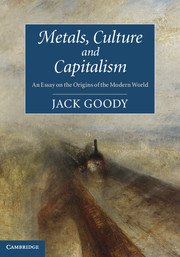Appendix 2 - Damascene steel and blades
Published online by Cambridge University Press: 05 June 2014
Summary
In an article of 1981, Christian Bromberger explains that western metallurgists only discovered the nature of ‘oriental steel’ at the beginning of the nineteenth century, although they had known and used it since Roman times. This steel was known as ‘Damascene’, possibly so called after the town with a flourishing manufacture of armaments; however the steel may in fact have been named after the patterning of damask cloth. In Arabic it was known as al-hindi, as the recipe originally came to the Near East from India, around Hyderabad, and from Transoxiana in Persia. The steel was made in India, even before the Christian era. Some iron for this purpose was imported from Sofala, in south-east Africa and the finished product was sent not only to the Near East but also it is claimed to China (though the process was also carried out there, from whence it may possibly have come). In fact it appears that in East Africa the Haya did invent a type of high-heat blast furnace which allowed them to forge carbon steel at 1,802˚ C nearly 2000 years ago. Such partial results were always possible in the experimentation of smiths. Moreover, the reach of metallurgy extended well beyond that of a particular ‘society’ or ‘culture’. Even Rome had imported Indian steel. In the east, the disks were often made up into blades, later into curved ones, for the sabre which was made to cut whereas the western sword was largely a weapon of penetration. These different weapons were associated not only with different steels and modes of manufacture but with different ways of fighting. The sabre was, for example, used in cavalry warfare, the sword mainly on foot.
- Type
- Chapter
- Information
- Metals, Culture and CapitalismAn Essay on the Origins of the Modern World, pp. 303 - 307Publisher: Cambridge University PressPrint publication year: 2012



